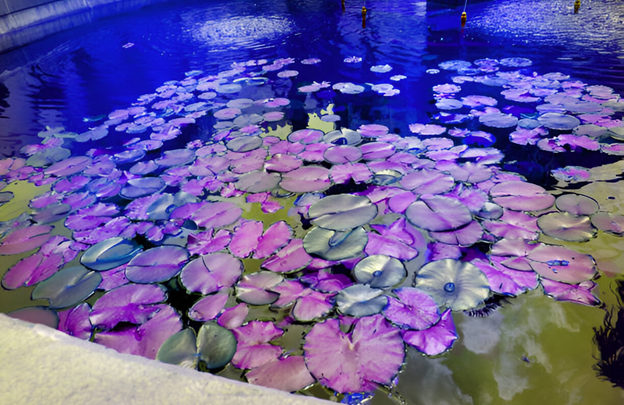Exploring the Role of UV Lights in Support of Good Bacteria

With regard to maintaining a good pond ecosystem, UV lights often get all the praise for keeping the water crystal clear and zapping algae. There is more to these ultraviolet heroes than meets the eye, though. Indeed, UV lights can also indirectly help useful bacteria—nature’s own cleaning crew—to proliferate. Knowing how these lights operate and their relationship to bacterial health can assist pond owners to create a better balance in their aquatic surroundings.
More than just transparent water
To fight green water brought on by free-floating algae, many pond owners purchase UV light systems. Passing pond water through a chamber where UV rays kill algae cells, pathogens, and even some strains of dangerous bacteria enable these systems to function. Although it could appear that UV light would likewise kill good germs, the truth is rather more complicated.
Since these bacteria usually live on surfaces—such as rocks, filters, and pond liners—rather than free-floating in the water, correctly installed UV systems do not directly affect colonies of beneficial bacteria. This is why professional pond care businesses such as That Pond Guy serving South London underline the need of proper UV system placement. Used properly, pond UV light lowers rivalry from algae, therefore enabling beneficial bacteria to thrive in the ecosystem of the pond.
The Indirect boost for good bacteria
So, how exactly do UV lights help beneficial bacteria? The key lies in creating a more stable and less toxic environment. Too much algae depletes oxygen levels and generates waste as it decays, in addition to clouding water.
This accumulation of organic material might impede the proper functioning of good bacteria, which break down two toxic waste products of fish—ammonia and nitrites.
UV lamps help to lower organic overload and raise oxygen levels by removing excessive algae from the water. This provides optimal conditions for helpful bacteria to colonize pond surfaces and filter media. Simply said, less stress on the pond means more space for nature to operate naturally.
Timing and balance matter
Using ultraviolet light involves both harmony and conflict. Run 24/7 without a plan, it might possibly lower the free-floating bacteria employed in certain pond treatments. Many pond specialists therefore advise briefly turning off UV lights when adding bacterial additives. This lets the new bacteria colonize and settle before exposure to UV radiation.
Furthermore, crucial is seasonal timing. Before starting the UV back on, it is recommended to provide advantageous bacteria a head start during spring startups and following extensive cleanouts. This guarantees a robust microbial foundation which can outcompete algae and hence better preserve water quality.
Working together: biofiltration and UV lights
See your pond as a team sport. While biofilters and good bacteria play defense by processing waste and stabilizing the environment, UV lights tackle the rapid offense by fast clearing the water. Used in conjunction with adequate aeration and consistent maintenance, this combination produces a pond year-round that is better, clearer.
Final thoughts
If used right, UV lights can actually help good bacteria instead of harming them. Great conditions for beneficial bacteria are created by UV lights which improve the water quality and take some stress off the pond’s ecology. This knowledge will help you create a vibrant, balanced aquatic space for either a DIY pond project or one made by a specialist.
